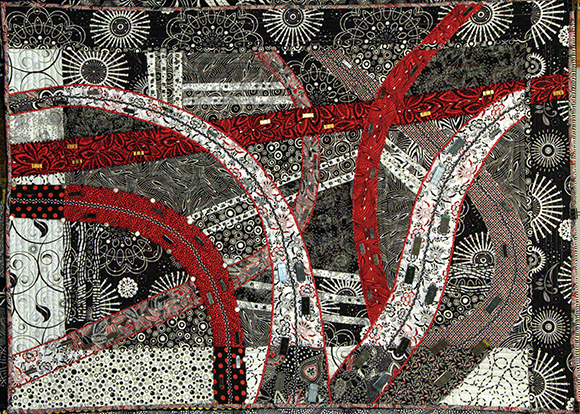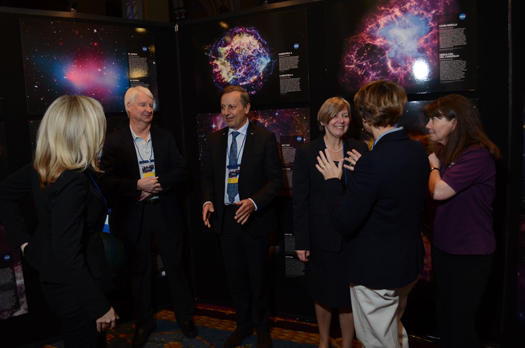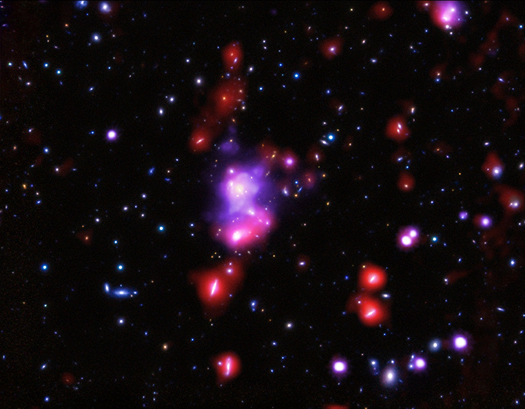Chandra Celebrates The International Year of Light
The year of 2015 has been declared the International Year of Light (IYL) by the United Nations. Organizations, institutions, and individuals involved in the science and applications of light will be joining together for this yearlong celebration to help spread the word about the wonders of light.
In many ways, astronomy uses the science of light. By building telescopes that can detect light in its many forms, from radio waves on one end of the "electromagnetic spectrum" to gamma rays on the other, scientists can get a better understanding of the processes at work in the Universe.
NASA's Chandra Detects Record-Breaking Outburst from Milky Way's Black Hole
On September 14, 2013, astronomers caught the largest X-ray flare ever detected from the supermassive black hole at the center of the Milky Way, known as Sagittarius A* (Sgr A*). This event, which was captured by NASA's Chandra X-ray Observatory, was 400 times brighter than the usual X-ray output from Sgr A*, as described in our press release. The main portion of this graphic shows the area around Sgr A* in a Chandra image where low, medium, and high-energy X-rays are red, green, and blue respectively. The inset box contains an X-ray movie of the region close to Sgr A* and shows the giant flare, along with much steadier X-ray emission from a nearby magnetar, to the lower left. A magnetar is a neutron star with a strong magnetic field. A little more than a year later, astronomers saw another flare from Sgr A* that was 200 times brighter than its normal state in October 2014.
Chandra Weighs Most Massive Galaxy Cluster in Distant Universe
A newly discovered galaxy cluster is the most massive one ever detected with an age of 800 million years or younger. Using data from NASA's Chandra X-ray Observatory, astronomers have accurately determined the mass and other properties of this cluster, as described in our latest press release. This is an important step in understanding how galaxy clusters, the largest structures in the Universe held together by gravity, have evolved over time.
Galactic Get-Together has Impressive Light Display
At this time of year, there are lots of gatherings often decorated with festive lights. When galaxies get together, there is the chance of a spectacular light show as is the case with NGC 2207 and IC 2163
Located about 130 million light years from Earth, in the constellation of Canis Major, this pair of spiral galaxies has been caught in a grazing encounter. NGC 2207 and IC 2163 have hosted three supernova explosions in the past 15 years and have produced one of the most bountiful collections of super bright X-ray lights known. These special objects - known as "ultraluminous X-ray sources" (ULXs) - have been found using data from NASA's Chandra X-ray Observatory.
A Beautiful Embodiment of the Chandra Archive
The people who work at the Chandra X-ray Center truly have many talents. Take, for example, Sherry Winkelman who works on the Chandra Data Archive, which houses the vast amounts of Chandra observations taken over the lifetime of the mission.

Just recently, Sherry’s quilt called "Interchange," an abstraction of the Chandra archive, was accepted for the 2015 Smithsonian Community Committee art exhibition, Artists at Work show. The quilt will be on exhibit in the Ripley Center in Washington, D.C. from February 4 through May 1, 2015.
Thank You, STS-93
A couple of weeks ago, the "15 Years of Science with Chandra" symposium was held in Boston, Mass. It was foremost a chance to bring scientists together who are doing some of the most fascinating research with Chandra on everything from black holes to neutron stars to dark matter.

Tech10: Technology & Astronomy
Last week, Tech Collective, Rhode Island’s industry association for Information Technology and Bioscience, announced ten Rhode Island IT practitioners, digital media designers, and entrepreneurs as its 2014 Tech10 Award recipients. Our own Kimberly Arcand, a Rhode Island native, was recognized for work as the Visualization Lead for NASA’s Chandra X-ray Observatory. Kim shared her thoughts on some important topics in science communication, which we include below.

STEM
The “STEM” fields of science, technology, engineering and mathematics seem inextricably linked, particularly in the field of space science. We can work from wherever there’s a connected computer – being able to access data from a spacecraft, orbiting a third of the way to the Moon, because of the telecommunications system/network and software that connects the observatory to the Deep Space Network and down through to – eventually - my laptop. My particular piece in this is directing the translation of the data and information into forms that others can use. That process happens in many ways, whether through the more literal form of processing binary data into visual representations of a cosmic object, or tweeting about a recent science result.
Supernova Shock Waves, Neutron Stars, and Lobsters
A supernova that signals the death of a massive star sends titanic shock waves rumbling through interstellar space. An ultra-dense neutron star is usually left behind, which is far from dead, as it spews out a blizzard of high-energy particles. Two new images from NASA's Chandra X-ray Observatory provide fascinating views - including an enigmatic lobster-like feature - of the complex aftermath of a supernova.
Reaching New Heights For Women & X-ray Astronomy
PART 2: #sts93 (PART 1)

Preparation for Launch
The size and weight distribution of the Chandra X-ray Observatory and its booster (called the Inertial Upper Stage, or IUS) posed extra risks for the crew of STS-93. Space Shuttle Columbia was the heaviest shuttle and the bulk of the weight from the two components in the payload bay – the heaviest ever to fly -- was located in the aft of the Shuttle. This meant it could be extremely dangerous – or fatal -- if for some reason, they had to return to Earth with Chandra and IUS in the payload bay.
Reaching New Heights For Women & X-ray Astronomy
PART 1: #womeninstem

STS-93 Launch





